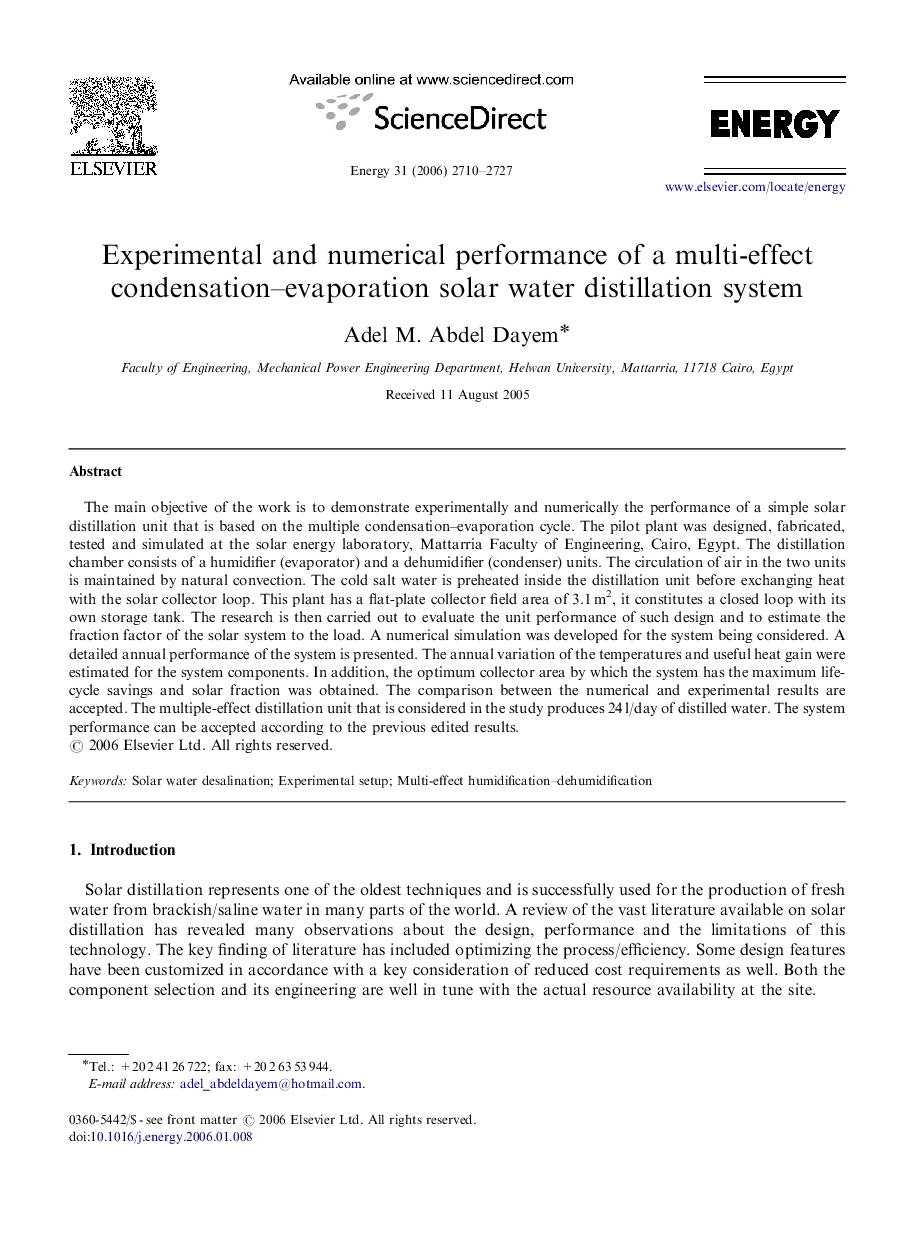| Article ID | Journal | Published Year | Pages | File Type |
|---|---|---|---|---|
| 1736313 | Energy | 2006 | 18 Pages |
The main objective of the work is to demonstrate experimentally and numerically the performance of a simple solar distillation unit that is based on the multiple condensation–evaporation cycle. The pilot plant was designed, fabricated, tested and simulated at the solar energy laboratory, Mattarria Faculty of Engineering, Cairo, Egypt. The distillation chamber consists of a humidifier (evaporator) and a dehumidifier (condenser) units. The circulation of air in the two units is maintained by natural convection. The cold salt water is preheated inside the distillation unit before exchanging heat with the solar collector loop. This plant has a flat-plate collector field area of 3.1 m2, it constitutes a closed loop with its own storage tank. The research is then carried out to evaluate the unit performance of such design and to estimate the fraction factor of the solar system to the load. A numerical simulation was developed for the system being considered. A detailed annual performance of the system is presented. The annual variation of the temperatures and useful heat gain were estimated for the system components. In addition, the optimum collector area by which the system has the maximum life-cycle savings and solar fraction was obtained. The comparison between the numerical and experimental results are accepted. The multiple-effect distillation unit that is considered in the study produces 24 l/day of distilled water. The system performance can be accepted according to the previous edited results.
